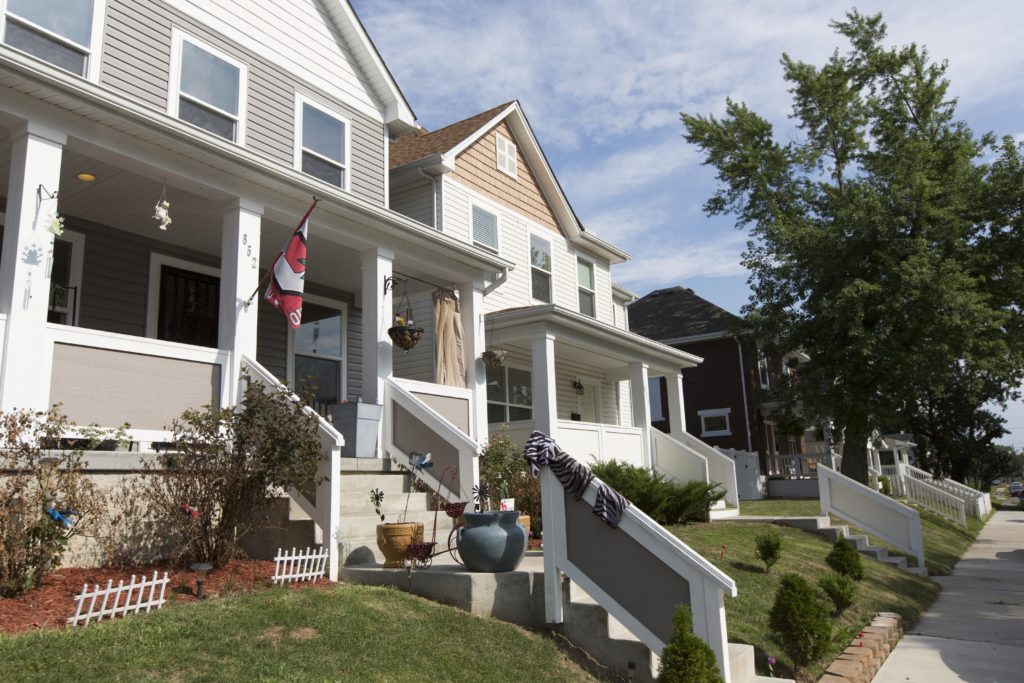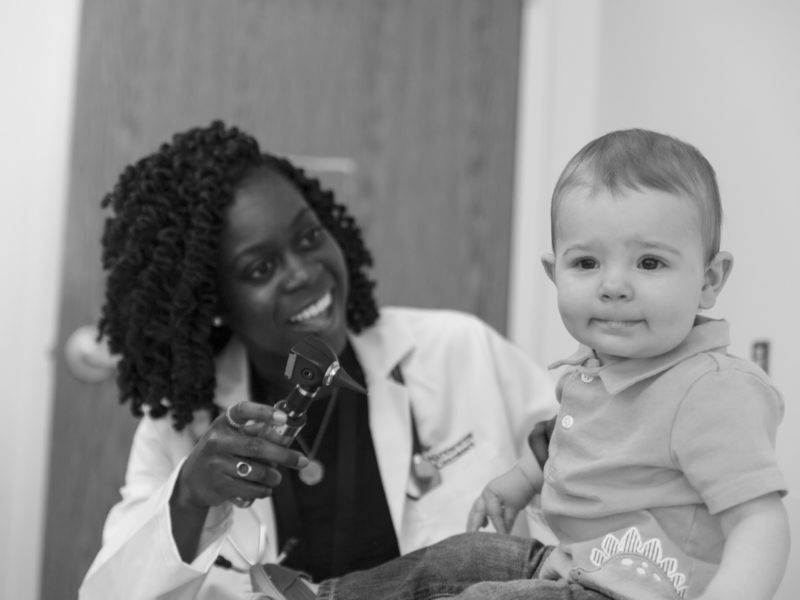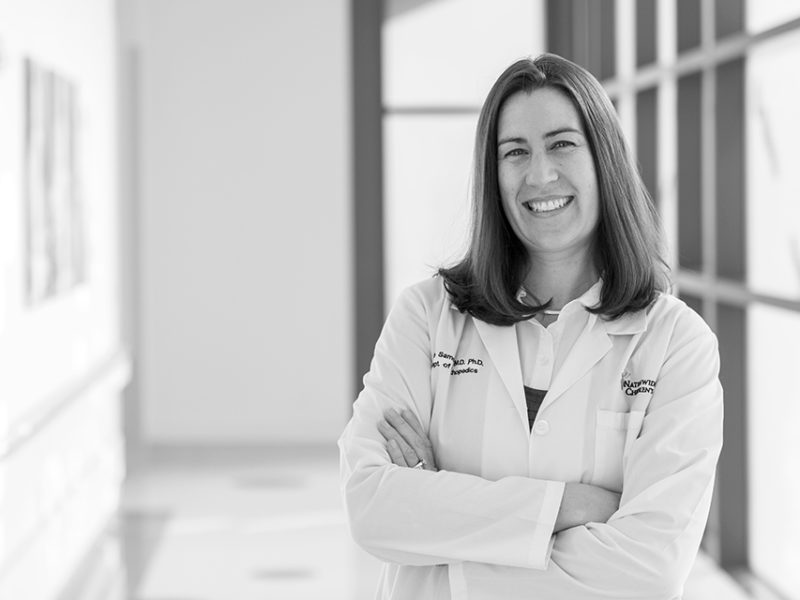A Decade of Healthy Homes
A Decade of Healthy Homes https://pediatricsnationwide.org/wp-content/uploads/2020/03/071216bs777-1024x683.jpg 1024 683 Kelly Kelleher, MD, MPH Kelly Kelleher, MD, MPH https://pediatricsnationwide.org/wp-content/uploads/2021/03/Kelly-Kelleher-1.jpg
Dr. Kelleher and Rev. John Edgar, executive director and pastor emeritus, Church and Community for All People, discuss the first decade of a collaboration aimed to take on housing issues in the South Side of Columbus as a way to improve health outcomes and answer the question: What’s on the horizon?
The last decade has seen an explosion of research and commentary on the importance of housing for health, especially for children and young families. Children in substandard housing or whose families are housing insecure have higher rates of emergency room use, inpatient care, poor health status, asthma and other chronic conditions.
Getting Started
Nationwide Children’s Hospital, Church for All People, the United Way and the Mayor’s Office recognized these issues earlier than many other community organizations. Working together, we launched the Healthy Homes program, one component of the Healthy Neighborhood Healthy Families initiative. At its inception in 2009, Healthy Homes was a novelty, a pilot program largely governed by a church and a hospital partnering to try their hand at community development. It started with the development of 10 houses in our immediate backyard.
That was just the beginning.
Now, Healthy Homes and its partners on the South Side have built or are in contract to build over $100 million in affordable housing on the South Side, with roughly half of that work done directly by Healthy Homes. The original 10 houses blossomed into 745 units built or under construction or under contract.
Most of the blighted properties have been fixed up. The vacancy rate has decreased by 75%. Homeownership rates have increased, while the average tenant in our new affordable rental units has an income of less than half of the median in our region. Furthermore, Healthy Homes is known for its green construction practices, strong relationships with the neighborhood associations and innovations in working with the city and county.
Connecting Housing to Health
Along the way, we’ve learned some important things. The program has measured housing production but has not done a great job of measuring child health outcomes to know what effects healthy housing is providing to families. Documenting these impacts will be a major part of the work moving ahead. Similarly, residents have not yet been included in a registry to track opportunities to improve other services like employment training, health care, child care, healthy foods and transportation.
The Challenge of Displacement
A critical challenge in the continued development of Healthy Homes is the potential for rising property values and displacement of existing residents, potentially excluding the very neighbors Healthy Homes was designed to help. Intentional efforts to avoid gentrification and support a flourishing mixed-income community remain part of our mission and process.
As sales of repaired and rehabilitated homes began to increase property values, Healthy Homes spent a year working with neighborhood associations and residents to coordinate a transition to buying and rehabbing properties for affordable rental, focusing on persons below 80% of the Average Median Income for Columbus. So far, it is working. The total number of Medicaid births in the neighborhood, our proxy for low income families in the community, has remained unchanged for the past decade.
Looking Forward to the Next Decade – And More
The collaborative work on housing is exciting, and it is a good thing because there is much work that remains. Columbus has a 54,000-unit shortage of affordable housing. Our work to date is important but not sufficient. Next steps will focus on learning new tools for affordable rental unit finance/construction and expansion to other neighborhoods.
Some of the innovative tools that may allow us to alleviate significant portions of the shortage include modular housing and accessory dwelling units. In researching home construction techniques and technologies, it has become apparent that modular homes, which can be assembled on site in “snap together” pieces are a viable and attractive option for new builds. This strategy reduces costs, energy and time in construction.
Similarly, in collaboration with the City, we are exploring the concept of accessory dwelling units to add density to city neighborhoods. Like many other midwestern cities, Columbus has several neighborhoods with large land parcels and a single dwelling on the land. By allowing accessory dwelling units, also known as “granny suites” for rental, density can be accommodated while increasing rental income for people living in older neighborhoods. One-bedroom options are scarce in older neighborhoods, and accessory dwelling units can address that need.
Besides these new tools, Healthy Homes is also expanding its footprint. While the work on the South Side will continue, Nationwide Children’s Hospital and Community Development for All People were participants in the large Chase Foundation Award to Columbus for known as The 614 for Linden. The 614 provides capital to invest in housing and job development in Linden and Healthy Homes is working with other award partners to develop a pipeline of affordable housing projects in Linden.
The benefits of these initiatives for the residents are significant. Quality housing is a primary social determinant of health. When blight is reduced, folks feel safer and spend more time getting to know their neighbors, encouraging social cohesion and positive relationships. And children are happier and healthier with safe, stable housing, where they can begin and complete each academic year in the same school.
It’s for children, families and the future of our communities that we look forward to building on all that we have learned and achieved as we move into the second decade of Healthy Homes.
Dr. Kelleher and Rev. Edgar are co-authors of this editorial.
About the author
Dr. Kelleher is a pediatrician whose research interests focus on accessibility, effectiveness and quality of health care services for children and their families, especially those affected by mental disorders, substance abuse or violence. He has a longstanding interest in formal outcomes research for mental health and substance abuse services. Dr. Kelleher is director of the Center for Innovation in Pediatric Practice and vice president of Health Services Research at The Research Institute at Nationwide Children’s Hospital. Dr. Kelleher is also professor in the Department of Pediatrics of The Ohio State University College of Medicine.
- Kelly Kelleher, MD, MPHhttps://pediatricsnationwide.org/author/kelly-kelleher-md-mph/July 7, 2014
- Kelly Kelleher, MD, MPHhttps://pediatricsnationwide.org/author/kelly-kelleher-md-mph/
- Kelly Kelleher, MD, MPHhttps://pediatricsnationwide.org/author/kelly-kelleher-md-mph/
- Kelly Kelleher, MD, MPHhttps://pediatricsnationwide.org/author/kelly-kelleher-md-mph/October 22, 2018
- Posted In:
- Features
- Second Opinions








